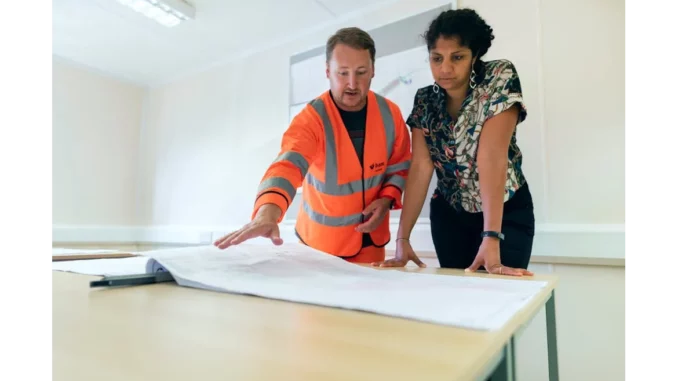
In a recent conversation with Liam, a seasoned project manager with over two decades of experience in the construction industry, I delved into the intricacies of materiality assessments on construction sites. As a journalist fascinated by the tangible impacts of infrastructure development on national growth, I found Liam’s insights both enlightening and inspiring. This article aims to shed light on how these assessments serve as a blueprint for boosting the UK’s growth and productivity.
Focus360 Energy: property compliance services – pre-planning to post-construction. Learn more.
Liam’s journey in the construction industry began in the late 1990s, a time when technological advancements were just beginning to reshape the landscape of construction. “Back then, the focus was primarily on getting the job done,” he recalls. “But over the years, I’ve seen a significant shift towards sustainability and efficiency, driven by both regulatory demands and a genuine desire to build better.”
This shift is most evident in the practice of materiality assessment. According to Liam, a materiality assessment is a comprehensive evaluation of the materials used in a construction project, considering factors such as cost, environmental impact, and suitability for the intended purpose. “It’s about making informed decisions that balance the immediate needs of a project with long-term sustainability goals,” he explains.
Liam elaborates that the process begins with a thorough review of the project’s requirements and constraints. “We start by identifying the key materials that will be used, from concrete and steel to insulation and finishes. Each material is then assessed for its performance characteristics, lifecycle costs, and environmental footprint.” This meticulous approach ensures that every decision made on-site contributes to the overall efficiency and sustainability of the project.
One of the most striking aspects of Liam’s experience is his emphasis on the collaborative nature of materiality assessments. “It’s not just about numbers and data,” he says. “It’s about working with a diverse team of architects, engineers, suppliers, and even the local community to ensure that we make the best choices.” This collaborative spirit is essential for fostering innovation and finding creative solutions to complex challenges.
Liam recounts a recent project where the materiality assessment played a crucial role in overcoming a significant obstacle. “We were working on a large commercial development in a densely populated urban area. The initial design called for conventional concrete, but we quickly realised that the environmental impact and logistical challenges of transporting and using such a heavy material would be prohibitive.” The team explored alternative materials and eventually settled on a high-strength, lightweight concrete blend that not only met the project’s structural requirements but also reduced the carbon footprint and minimised disruption to the surrounding community.
This example highlights the broader impact of materiality assessments on the UK’s growth and productivity. By prioritising sustainability and efficiency, construction projects can significantly reduce their environmental impact while also delivering cost savings and improved performance. “It’s a win-win situation,” Liam asserts. “We’re not just building structures; we’re creating value for society as a whole.”
Another critical aspect of materiality assessments is their role in driving innovation within the construction industry. Liam points out that the continuous search for better materials and methods often leads to breakthroughs that benefit not only individual projects but the industry as a whole. “When we push the boundaries and try new things, we set new standards for what’s possible. This drives competition and ultimately leads to higher quality and more sustainable outcomes.”
As our conversation draws to a close, Liam reflects on the future of materiality assessments and their potential to shape the UK’s construction landscape. “I believe we’re only scratching the surface of what’s possible,” he says with a sense of optimism. “With advancements in technology, such as artificial intelligence and data analytics, we can make even more informed decisions and push the boundaries of sustainability and efficiency further.”
Liam’s insights underscore the critical role that materiality assessments play in the construction and infrastructure industry. By making informed, collaborative decisions about the materials used in projects, the industry can contribute to the UK’s growth and productivity in meaningful ways. The emphasis on sustainability, efficiency, and innovation not only benefits individual projects but also sets the stage for a more resilient and prosperous future.
In conclusion, my conversation with Liam has provided a fascinating glimpse into the world of materiality assessments and their broader implications for the construction industry. As the UK continues to invest in infrastructure development, the principles and practices highlighted by Liam will undoubtedly play a crucial role in shaping a sustainable and productive future.
Tobiasz Karcz


Be the first to comment